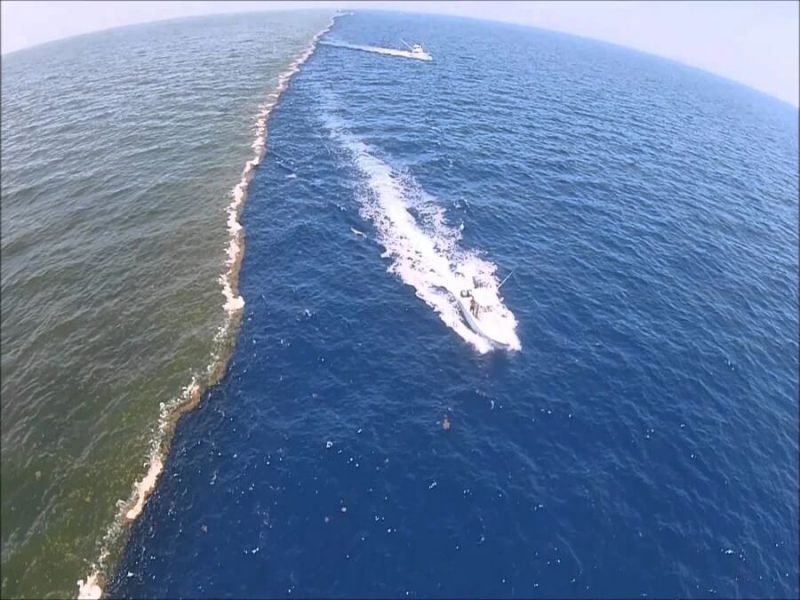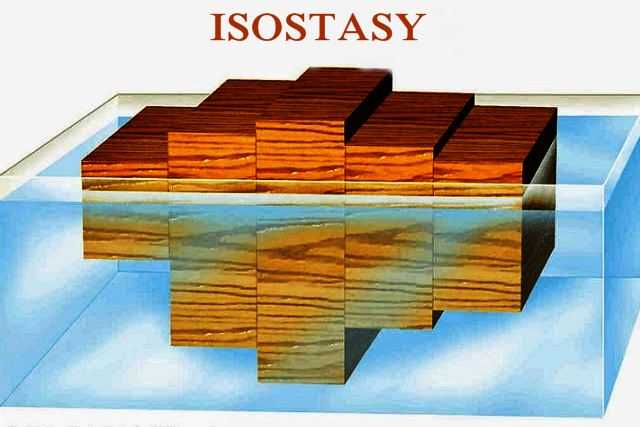
Do mountains prevent earthquakes?
Question: Do mountains prevent earthquakes, what does science say about this? What is the relationship between mountains and earthquakes? Some people say that mountains have nothing to do with earthquakes and that places with many mountains have more earthquakes. Is there a relationship between mountains being stakes in the Qur’an and the role of mountains on earth?
Answer:
Verses on the question of whether mountains prevent earthquakes
In answer to the question of whether mountains prevent earthquakes, the Qur’an states the following:
Nahl 15: “And He has placed WEIGHTS on the earth so that it may not shake you with its motion. He has placed rivers and passages for you to reach your goals.”
Anbiya 31: “We placed WEIGHTS therein that the earth might not shake the people. We have made therein wide roads and passages that they may reach their purpose.”
Luqman 10: “He created the heavens without pillars, as you see. And He placed WEIGHTS on the earth so that it would not shake you, and produced and spread therein every kind of living creature. And We sent down water from the sky, and therein We caused every good seed to grow.”
Nebe 7: “Did We not also make the mountains a stake?”
The word weights (revasiye) in the verses refers to mountains. It emphasizes the heavy nature of mountains.
What is isostatic equilibrium? What do mountains have to do with earthquake prevention?
In order to understand how mountains are an element of balance in the earth’s crust to prevent earthquakes, we need to know the concept of isostatic equilibrium and the formation of mountains. We cannot give a scientific answer to the question of whether mountains prevent earthquakes without explaining isostatic equilibrium.
The Earth is made up of 15 large tectonic plates. These plates are independent of each other and they collide and push each other like bumper cars moving in a narrow space. These movements do not happen in a short period of time and take place over hundreds of millions of years. The figure below shows the boundaries of the 15 tectonic plates that make up the Earth (West, 2009).

We have not yet seen the inside of our Earth, but we know that it is very complicated and has a very dynamic structure, as shown below (West, 2009).
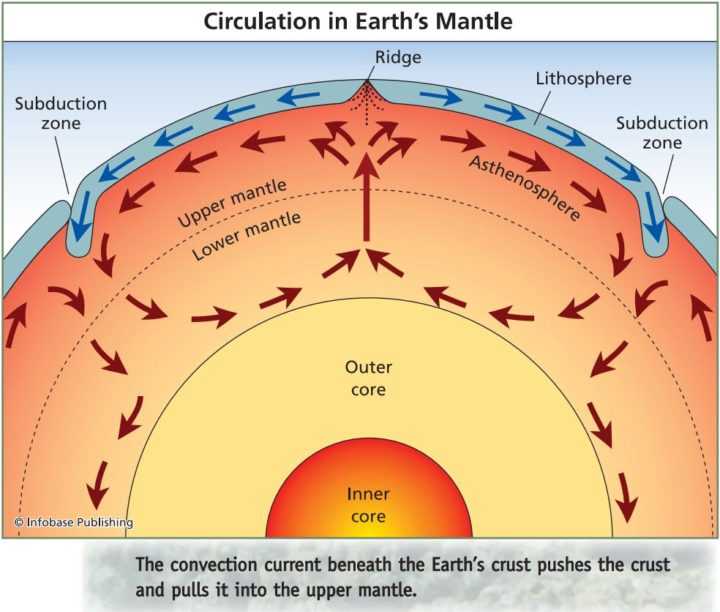
https://www.bilimveyaratilisagaci.com/wp-content/uploads/2018/05/ekran-alc4b1ntc4b1sc4b13.jpg
This dynamic structure inside the Earth is called internal forces and it triggers the continents to constantly move, change shape, form mountains and trigger earthquakes. There are many large and small earthquakes on Earth every year. The ground shakes every 30 seconds. In Alaska, for example, it has been reported that there are 22,000 small-scale tremors per year (Prager, 2009). Most earthquakes occur at the boundaries of tectonic plates. Inland ruptures of the earth are called fault lines, and they also cause earthquakes (Prager, 2009).
Formation of mountains
To understand the answer to the question of whether mountains prevent earthquakes, the mechanism of their formation must also be known. In the old books of Quranic miracles, it was written that mountains have roots at the collision points of continents. For example, Mount Everest. However, only mountains at the collision points of continents do not have roots, all mountains have roots. The mountains that are formed to maintain the isostatic balance, which we will explain in a moment, also have roots, and in fact most of the mountains were formed by this mechanism. For example, mountains that do not form at the junction of continents, such as Turkey, are formed as a result of isostatic equilibrium and their roots have sunk into the earth’s crust like a stake.
Mountains are formed by several different mechanisms:
- Fracturing: This type of impact occurs in hard rocky places as a result of the compression of continents. Large fractures occur in the rocks. Over time, these broken pieces rise as new mountains with the effect of the compressed continents.

- Volcanic mountains: These types of mountains are formed where the magma under the earth’s crust comes to the surface as lava.
- Folding: When tectonic plates collide with each other, large mountain ranges form along the line of contact. The heavier of these plates goes under the lighter one and the lighter one rises as the visible part of the mountain, while the heavier one continues as the heavy parts of the mountains below the ground. Examples of these mountains are the Himalayas and the Alps, including Everest. See the figure below for this formation of mountains and their underground roots.

Folding mountain formation does not only occur at the boundary of two plates. A force that decreases as you move away from the collision point causes large areas to fold and large and small mountains to form. These folds ensure isostatic equilibrium. Isostatic balance is closely related to earthquakes.
Tectonic plate and isostatic equilibrium
The Earth’s crust does not consist of a single piece; it is divided into various parts. Each of these parts is called a tectonic plate. The composition, density, depth and thickness of these pieces are different from each other. These various blocks with different thicknesses, compositions and densities exist in a state of equilibrium deep in the earth. This is why the parts of the earth that are made up of light soil rise like pillars and form mountains, so that these regions become denser and create equal gravitational field and pressure with other regions.
The Earth raises mountains to create equal gravitational force at every point and thus isostatic equilibrium. In other words, the pressure exerted by these mountain blocks in the mantle is balanced and equalized at a certain depth. This equilibrium is called isostatic equilibrium (Arslan, 2016). The figure below shows the formation of mountains in some regions with the effect of isostasy and their floating in balance on the mantle fluid with the equal weight they create thanks to their underground roots.

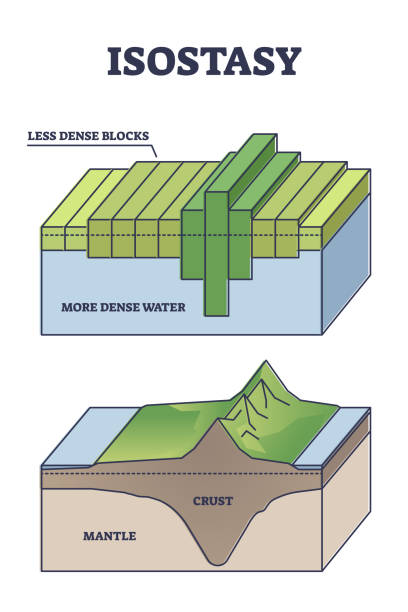
According to the law of isostasic equilibrium, there should be equal density of matter and equal gravity everywhere in the Earth’s crust. Therefore, in places where the density is low and would lead to fault ruptures, mountains rise and the density increases. In this way, there is equal density everywhere and the earth’s crust floats in equilibrium on the mantle. Fault fractures and movements caused by imbalances are prevented. Although there are different mechanisms for the formation of mountains, most of the mountains on earth are formed by this mechanism.
Understanding of isostatic balance revealed that mountain formations stabilize the earth’s crust
The mechanism by which mountains prevent earthquakes is related to the fact that the earth’s crust is calm and balanced on the underlying fluid. This equilibrium is called isostasy. George Everest‘s pioneering geological studies in India led to the discovery of the principle of isostasy. Later, two researchers, Airy [1855] and Pratt [1855], independently of each other, used vertical data to address the question of how Everest supported the Himalayan mountains in northern India at depth. Fisher [1881], defending Airy’s hypothesis that the Himalaya was supported by a deep “root” of crust, concluded that the crust was in hydrostatic equilibrium and floated in the fluid substrate like an iceberg in seawater.
Accordingly, as the crust floated on magma, it extended upwards and downwards from the crust, with long mountains at some points and short mountains at others, and roots directly opposite these mountains, to keep it in equilibrium. In the oceanic basins, the oceans provided the necessary weight and ensured that the isostatic balance was equal to the mountainous areas.


In mountainous regions, where continents are thicker, the crust is deeply embedded in the mantle. So what would happen if mountains and their roots in the Earth’s crust did not form in isostatic equilibrium? Bending, fractures and deep faults would occur in the lighter, less dense parts of the earth (Meinesz, 1931). By balancing the weak points of the earth’s crust by thickening it with mountains, the stress on the tectonic plates is balanced, and in cases where the earth’s crust is weak, fault ruptures occur and earthquakes occur (Watts, 2011).
Mountains prevent earthquakes thanks to isostatic balance
If the pressure exerted by the Earth’s crust on the mantle layer had not been equalized from a certain level, the tectonic plates would have experienced more fluctuations due to their light and heavy ends and would not have been able to float in balance. Thus, earthquakes and tremors would be much more frequent (Eakin, 2018). It has been confirmed by many studies that mountains prevent earthquakes thanks to isostatic balance.
Geologists calculate crustal thicknesses by gravity mapping the earth (Mishra, 2011). At some points on the Earth, the force of gravity is not in balance with its environment. In such environments, new mountain formations continue. In such places where isostatic equilibrium is not achieved, that is, where there is gravitational imbalance, earthquakes are experienced more (Tsubol, 1940). The question of whether mountains prevent earthquakes cannot be understood without knowing isostatic balance.
In his article “Seismicity and Isostasy“, Artemjev and his team explain in clear terms how isostatic equilibrium prevents earthquakes, and that it has been proven by numerous studies that earthquakes are more common where there is no isostatic equilibrium. I am sharing a few screenshots from the article for those who speak English. (Link)
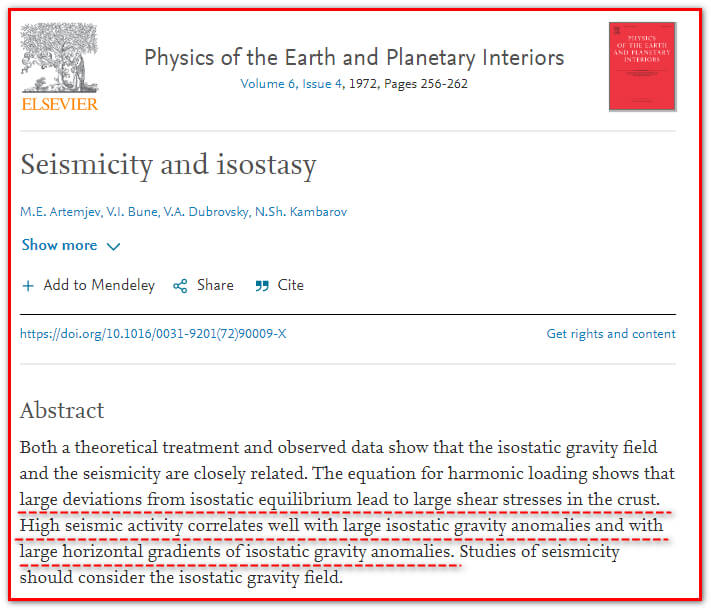

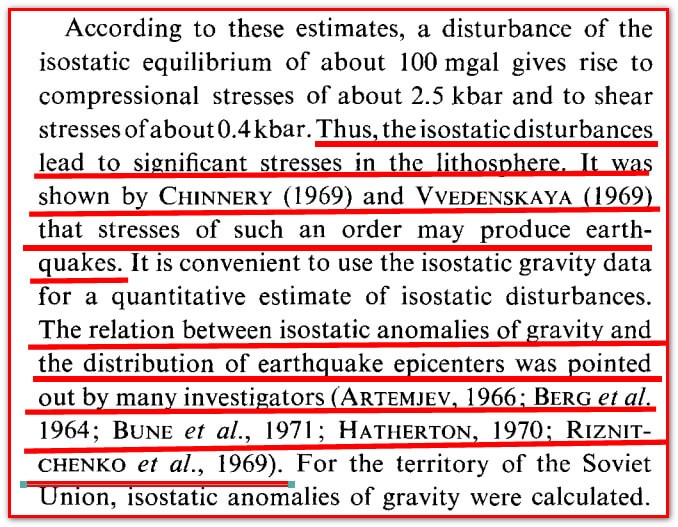
The following graph is also presented in the article. In the graph, they have marked the regions in Japan where earthquakes have occurred according to years and they have shown that isostatic equilibrium is weak in these regions.

In short, it is a well-known fact for over 100 years that there are many earthquakes in places where isostatic balance is disturbed and mountains rise to restore isostatic balance. It has been proven by numerous studies. The research we cited above shows that isostatic equilibrium is disturbed in areas of Japan where earthquakes are common. Airy [1855] and Pratt [1855], the discoverers of isostatic equilibrium, reported that mountains rise in places where isostatic equilibrium is disturbed and thus there are weights to ensure isostatic equilibrium.
Volcanic mountains also prevent earthquakes
In the researches we have given above, we have explained that the formation of mountain ranges and the establishment of isostatic balance reduce earthquakes. Apart from this, volcanic mountain formation mechanisms are also effective in reducing and absorbing earth tremors. Volcanic mountains relieve the pressure by allowing the magma that is trapped underground and exerting pressure on the earth’s crust to come out. In other words, it acts as a valve and reduces tremors (Segall, 2010; Hill, 2002).
Some people who hide science in order to deny the Quran
As can be seen, mountains act as a great element of balance on earth and prevent tremors. They are more abundant in areas where there is an imbalance of gravity, so that the great tremors that can occur there are balanced. Despite these facts, some people who do not want to accept this function of mountains just because it is mentioned in the Qur’an, and who want to mislead with their rhetoric, try to hide the truth by making an interpretation that is contrary to science and logic. They say;
-If mountains had an anti-shaking role, why do mountainous regions like Japan have more earthquakes and flat regions like Arabia have fewer earthquakes?
Those who read this article will easily give the reason for this. Because mountains rise more in regions where earthquakes occur in order to maintain isostatic equilibrium, and their task is to maintain equilibrium and reduce earthquakes. That is why mountains rise more in regions like Japan where the earth’s crust is not in equilibrium and where there are many fault fractures, whereas they rise less in regions where the earth’s crust is more stable and earthquakes are less common.
Let’s explain the question of whether mountains prevent earthquakes with an example
Their logic, for example, goes something like this: “Although Istanbul has more security forces than anywhere else, it also has the highest crime rates. This means that security forces have nothing to do with crime prevention.” Isn’t it illogical? Here they are making the same illogical argument that mountains do not prevent earthquakes. This is how they depart from reason and science to invalidate the verse that mountains prevent earthquakes.
Another example: The car manufacturer says that we have put shock absorbers so that your car will not shake in potholes. Now, if you shake in deep potholes with this car, will the car manufacturer’s promise be wrong? Does the car manufacturer mean that you will never be shaken? No, he is teaching you the anti-shock function of the shock absorber. To say that we put shock absorbers so that you will not be shaken does not mean that you will never be shaken. Let’s say in a country where they didn’t know what a car was, indigenous people found a car and someone said, “This part is to prevent shocks. Much later, these natives learned about the car and realized that that day that man was telling the truth. If he hadn’t spoken on purpose, it would have been impossible for him to have guessed this information. In the same way, the earthquake-preventing function of mountains, which we have explained in the question of whether mountains prevent earthquakes, is an unknowable fact. This knowledge is clear proof that the Qur’an is from Allah.
When people who have nothing to do with science defend such distorted logical claims, you do not find it strange, you give them credit for their own zeal in defending their own beliefs. But when a professor of geology does not explain the facts described above, but tries to screen the question of whether mountains prevent earthquakes with mind games like the others, it is very strange. Because then one of two things is decided;
Either this professor is not as knowledgeable as he is portrayed to be, he does not know these issues, or he mixes his ideological prejudices with science and contaminates it. He is abusing his title and scientific identity by removing or misinterpreting parts of science that are not useful to him.
Pretext for the existence of mountains in some myths
The second point that some people make is that mountains are the pillars of the earth and that the fact that they prevent earthquakes is mentioned in the Torah, Chinese sources and other sources before the Qur’an. Yes, it can and even should. Because Allah is one and it is normal for Him to inform and teach such blessings to different societies through prophets. The Qur’an does not say that Allah revealed them to people for the first time. And yet, in the accounts of some other nations, although mountains are compared to nails, we do not find an explicit mission to prevent earthquakes. The Prophet Muhammad did not have the internet at his disposal to access Chinese literature, Turkish literature and to pick and choose the right ones (!).
A jahiliyyah poem contains similar expressions. However, according to experts, most of these poems were changed and recited with Islamic meanings during the Umayyad and Abbasid periods. You can read in detail in our article number 93.
The Qur’an always tells scientific truths, and this is the clearest miracle of all
What is important for the Qur’an is that none of the information it gives about the universe contradicts science in any way, and it fits every time like a key fits a lock. It does not contain any of the scientific fallacies of ancient mythologies, and everything it says has been proven by science, and every day another truth is revealed. As in the example of whether mountains prevent earthquakes.
We have explained in detail and with scientific proofs all the verses that some atheists try to show as if there are scientific contradictions in the Qur’an, similar to the situation here. So the fact that there are no contradictions in a book that was written 1400 years ago and that foretells many events of the universe shows that the Qur’an is an inaccessible miracle.
Briefly; The answer to the question of whether mountains prevent earthquakes is yes, mountains prevent earthquakes, just as a depreciation prevents tremors.
Note: This article was translated from TR to EN by machine translation and was not checked. So there may be some translation problems.
REFERENCES
Arslan, S. (2016). Türkiye Jeofizik Rejyonal Gravite Haritaları Ve Genel Değerlendirilmesi. Bulletin Of The Mineral Research and Exploration, (153), 203-222.
Artemjev, M. E., Bune, V. I., Dubrovsky, V. A., & Kambarov, N. S. (1972). Seismicity and isostasy. Physics of the Earth and Planetary Interiors, 6(4), 256-262. Link
Eakin, C. M., & Lithgow‐Bertelloni, C. (2018). An Overview of Dynamic Topography: The Influence of Mantle Circulation on Surface Topography and Landscape. Mountains, Climate and Biodiversity, 37.
Fermor, L. L. (1914). III.—The Relationship of Isostasy, Earthquakes, and Vulcanicity to the Earth’s Infra-Plutonic Shell. Geological Magazine, 1(2), 65-67.
Hill, D. P., Pollitz, F., & Newhall, C. (2002). Earthquake-volcano interactions. Physics Today, 55(11), 41-47.
Mishra, D. C. (2011). Gravity and magnetic methods for geological studies. Hyderabad: BS Publications.
Prager, E. J. (2009). Earthquakes and volcanoes. Infobase Publishing.
Segall, P. (2010). Earthquake and volcano deformation. Princeton University Press.
TSUBOI, C. (1940). Isostasy and maximum earthquake energy. Proceedings of the Imperial Academy, 16(9), 449-454.
Vening Meinesz, F. A. (1931), Une nouvelle methode pour la reduction isostatique regionale de l’intensite de la pesanteur, Bull. Geodesique, 29, 33-51.
Watts, A. B. (2011). Isostasy. In Encyclopedia of solid earth geophysics (pp. 647-662). Springer, Dordrecht.
West, K. (2009). Layers of the Earth. Infobase Publishing.
https://www.britannica.com/science/isostasy-geology
Bu yazı hakkında ne düşünüyorsunuz?

